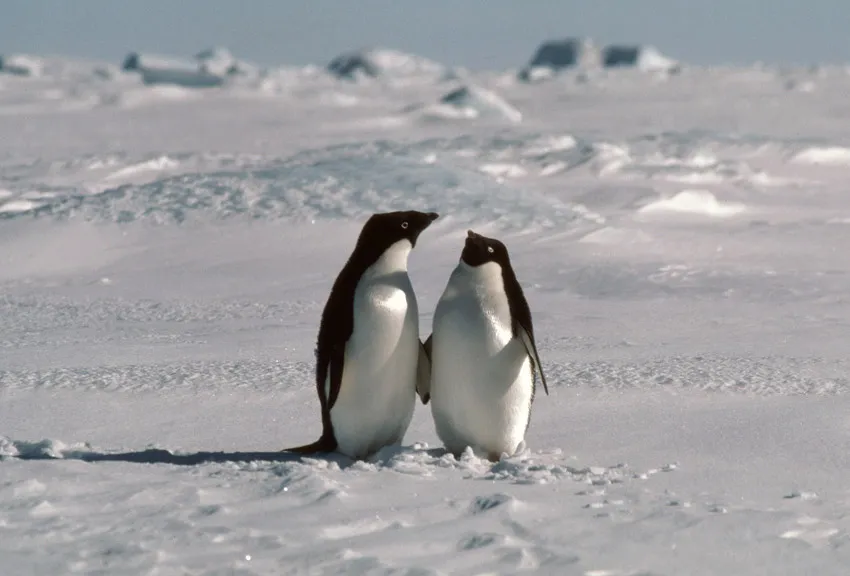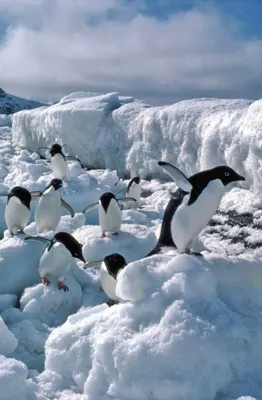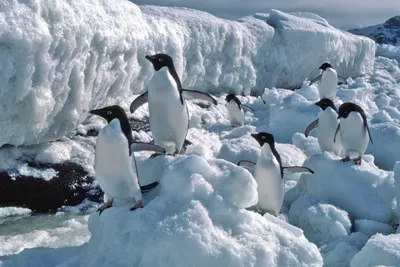Adelie Penguins - Pygoscelis adeliae
Facts, Biology and Adaptations
The most southerly breeding penguins along with the Emperor, found on continental Antarctica and sub-Antarctic islands.
Adelie Penguin facts - Basics
Average Weight: 5kg - 11lb - feels
more than this though when you've upset one and it's
ran up and attacked you by hanging off your thigh with its
beak, the penguin version of a pair of pliers attached to
your leg.
Average Height: 70cm -
27.5inches
Breeding Season: November - February
- Adelie penguin colonies are very loud, raucous,
busy and smelly affairs. The call of an Adelie is as musical
and gentle as a braying jackass and the whole colony is
awash with guano (posh word for bird poop). When I was in
Antarctica one thing I did was help with long-term surveys
which entailed walking through the colony (terribly frowned
upon these days). Each nest is just over two pecking distances
apart so the penguins can't reach each other. Of course
walking through the middle meant that you were in range
of everyone. I used to worry a lot about falling over in
a penguin colony, covered from head to toe in guano and
pecked mercilessly.
Reproduction:
Large colonies of up to half a million birds. Nests are
lined with pebbles, and slightly higher than the surrounding
land so that if the temperature rises and the snow melts,
the nest is not flooded. The males arrive first on the nesting
site at the beginning of the season and start the nest,
then both partners work to build it. Usually two eggs are
laid, rarely three. Incubation of the first egg takes 35
- 37 days, with the second chick being a few days behind
the first. Male and female parents share egg and chick duty.
Chicks are fed regurgitated krill (yum!) The chicks become
independent at about two months old.
Estimated
world population: - 14-16 million, increasing.
Feeding & diet: Eat mainly krill,
also fish, amphipods and squid in smaller quantities in
shallow dives of 20m or less.
Predators:
Leopard seals - main predators of adult birds,
and Skuas - prey on eggs and chicks on land.
Conservation status: Least concern.
Distribution: Circumpolar, tend to be found
within the pack ice.
Oldest Rookery - At
least 6,335 years old. The places where penguins
nest together are called rookeries. These are started and
later abandoned for reasons that are not entirely clear.
Archaeological type studies have found that these rookeries
are often continually used for many hundreds of years, even
thousands. The oldest so far found has been used every year
since well before 4 000 BC.
Myth: Penguins don't fall over backwards
when watching helicopters and airplanes flying overhead
requiring squads of people to go round and pick them up
again, an Antarctic "urban myth".
Why is this Adelie penguin on the ice?
Sometimes Adelie penguins have to travel as much as 100 kilometres (60 miles) across sea-ice to reach their nesting sites, though usually 20-40 is more usual. The ice has usually broken up by the time the chicks are hatched.
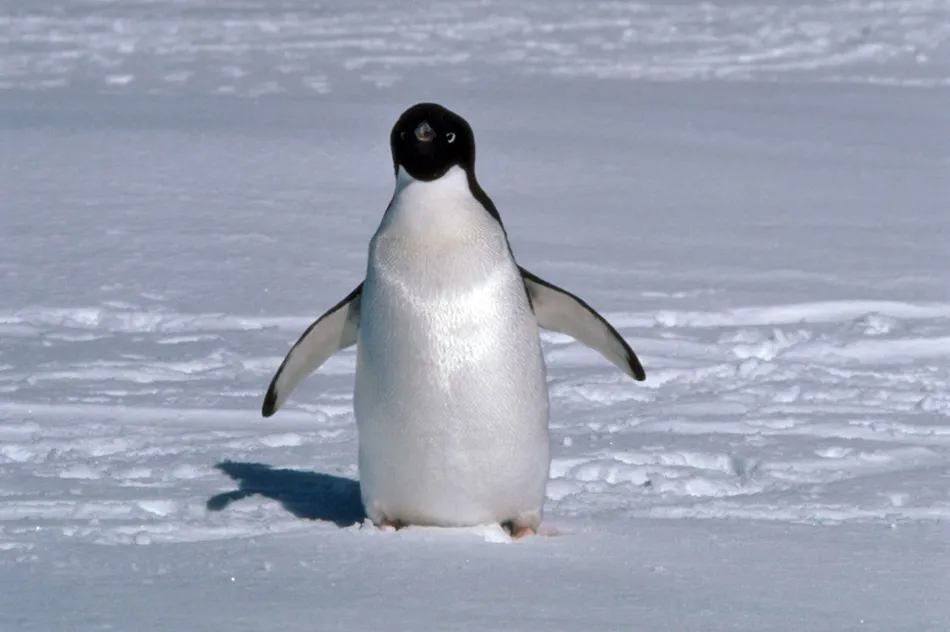
This guy here was an early arrival (the males arrive first) in spring at an Antarctic Island near the northern edge of the breeding range and only had about half a kilometer left to waddle and "toboggan".
Tobogganing is a way of getting around where there is smooth snow or ice. The penguin lies on its front and propels itself along using its feet, an efficient use of energy and one where the penguin can easily keep up with a running person.
When do Adelie penguins start to nest?

Adelies winter on the pack ice where the air temperature
is higher than on land and where they can find cracks
in the ice to fish through.
In October, they begin to
move south to their breeding grounds, the males arriving first
to establish territories and nest spaces with the females arriving
shortly afterwards.
These are some of the first males arriving back in the spring before the remainder of the sea-ice has broken away, taking a rest here before continuing on their journey.
Why are these penguins hopping about on the ice?
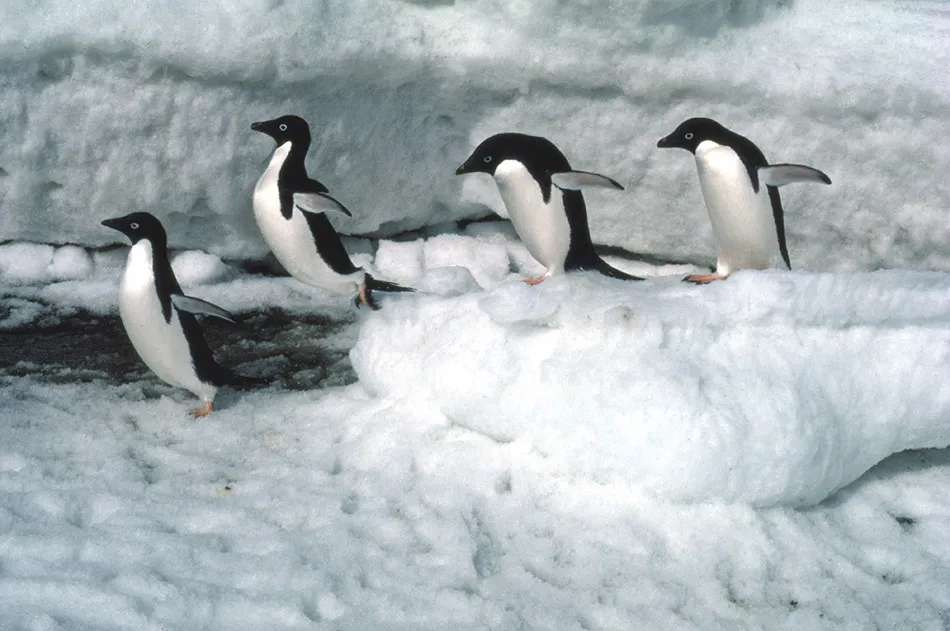
These Adelies have a problem, they went out fishing at high tide and now. some hours later have returned. In the meantime the tide has gone out.
Still attached to the land is the "ice-foot" an ice step left behind as the tide rises and falls in the winter months to which the floating sea ice is loosely attached. When the sea ice breaks out, the ice-foot is left behind for a period of days to weeks before rising temperatures and the waves cause this to break off too.
What was a short hop down for the penguins is now a step too high for them. I spent a couple of hours one afternoon watching and following an ever increasing number of penguins as they came back from their fishing trip. They wandered up and down the shore-line trying to find somewhere to get up, but to no avail. Eventually, the tide came back in and so they floated back up to the right level and were able to get back to their nests. The ice-foot broke off completely a few days later in a mild storm.
More of the Adelies stuck at low tide.
The ice-foot is more evident in this picture and the number of penguins is building up, by the time the tide was rising enough to float the grounded "bergy bits" that the birds are standing on, there were about 50 or so penguins standing around before they could get back up.
Why is this penguin showing off?
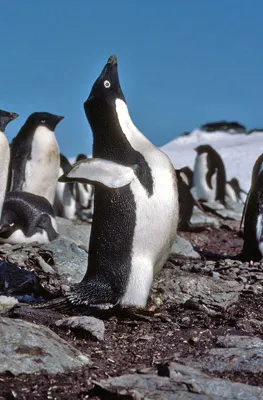 What a handsome fellow! This
male Adelie is a bit late compared to the others around him
who have in the main already paired and nested.
What a handsome fellow! This
male Adelie is a bit late compared to the others around him
who have in the main already paired and nested.
The males arrive at the breeding grounds first, find a good spot and then go through this display with much raucous calling and flipper waving to attract a suitably impressed female. (A similar ritual is re-enacted on Friday and Saturday evenings at bars and clubs the world over).
You can also see the half-feathered beak characteristic of Adelie penguins and how stocky and powerful they are despite their diminutive stature.
Like many penguin species, the male and females are physically almost completely identical and it is almost impossible to tell them apart by their appearnce, the behaviour at mating time however gives things away much more clearly.
Adelie penguins (Pygoscelis adeliae) tobogganing
Tobogganing Adelie penguins (and a lone chinstrap in the fore-ground). All types of penguin that come across snow and ice can and will toboggan in this manner. It is a very efficient and rapid way of moving when the conditions are right - soft snow, but where the penguin only sinks a little way into it, needing less energy than walking the same distance.
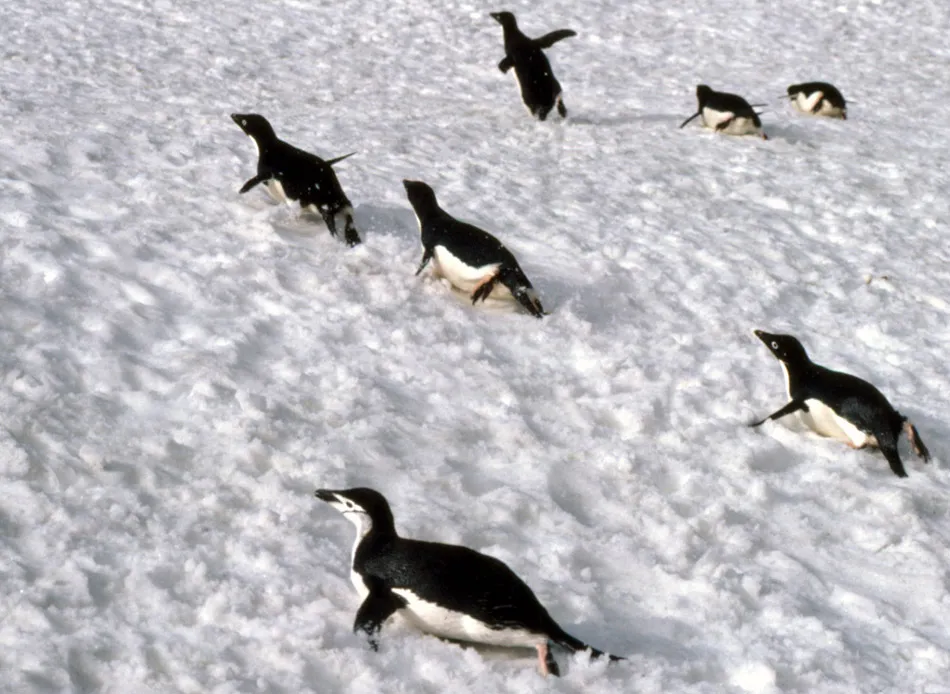
The penguin lays on it's front and pushes its way
forwards using its feet, the flippers are used for balance or
sometimes as oars to help forwards movement. It can be a fast
sprint to get away quickly or a more leisurely equivalent of
a slow-jog over a long time period.
A considerable speed
can be reached for short distances in this way, enough to out
pace a running person.
Penguin dive
Antarctic penguins run a constant risk when entering or leaving the water from the almost ever-present danger of their main predator, the leopard seal. Leopard seals tend not to chase penguins around in the open sea, but hang around the places where they jump into the sea from their nesting areas, or where they leave the sea again as this is gives much more productive hunting.

The penguins have a problem when going into the sea, they have to enter it to go fishing and to get places, but being the first one in means that they're first in line for a potential leopard seal attack. Hanging back isn't any better though as they may get left behind and end up jumping in on their own. What happens therefore is that they gather at the edge of the water becoming quite animated and jostling for position until one near to the edge gets pushed or jumps in - that's the signal for the rest, as the odds of survival are far greater when you're part of a large group which can confuse the leopard seal, they then all dive in in rapid succession.
Parent penguin and chicks
 Like many penguins, Adelies lay
two eggs of which usually only one survives to fledge.
Like many penguins, Adelies lay
two eggs of which usually only one survives to fledge.The parents take it in turns to incubate the eggs or go out to sea fishing and then later on when the eggs have hatched, they take it in turns to catch food for and feed the chicks or sit with the chicks on the nest. When the chicks are older and able to walk around and leave the nest, the parents will both go fishing together to supply the growing demand for food from the growing youngster/s.
The chicks left behind form loose collections of birds that stay close together in a group called a creche where they help defend to each other from marauding skuas and also the weather when the wind blows and temperature drops, huddling together gives them extra warmth and protection.
Adelie penguin adaptations
One of the "classic" penguin species, the second most southerly after the Emperor, Adelie penguins breed in the far south, but leave it to head north with the onset of winter.
- Anatomical - Structures of the body.
- Behavioural - The manner in which animals move and act.
- Physiological - The internal functions of the animal from biochemical, to cellular, tissue, organ and whole organism levels.
Adelie Penguin Anatomical Adaptations
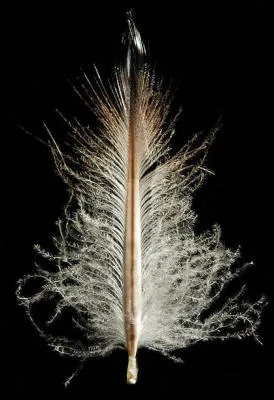
Adelie Penguin Behavioural Adaptations
![]() Arrive in the south early in the summer season, to
take best advantage of the seasonal abundance of food.
Arrive in the south early in the summer season, to
take best advantage of the seasonal abundance of food.
![]() Tobogganing sliding on their front while pushing with
legs, saves a lot of energy on long journeys.
Tobogganing sliding on their front while pushing with
legs, saves a lot of energy on long journeys.
![]() Build a crude nest of stones to lift the eggs above
ground level to prevent chilling from melting snow in summer.
Build a crude nest of stones to lift the eggs above
ground level to prevent chilling from melting snow in summer.
![]() Gather at the ice edge in large groups before jumping
in the sea in case of predators, this increases individual survival
chances.
Gather at the ice edge in large groups before jumping
in the sea in case of predators, this increases individual survival
chances.
Adelie Penguin Physiological Adaptations
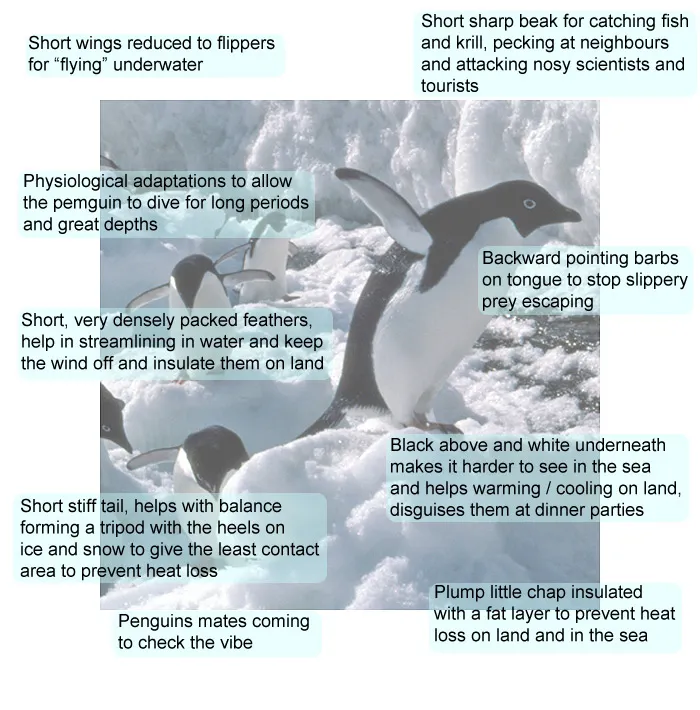
Picture credits: Header picture courtesy DepositPhotos under licence

